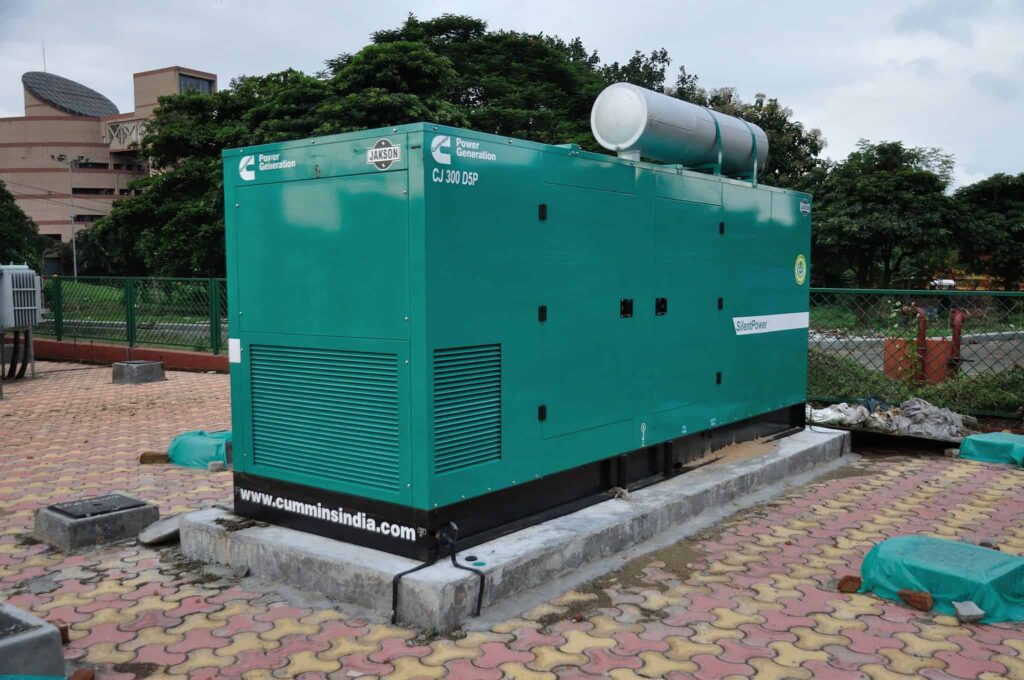Generator for Commercial or Office Building: Ensuring Reliable Power Supply
In today's modern world, uninterrupted power supply is crucial for the smooth operation of commercial and office buildings. Power outages can lead to significant financial losses, disruption of essential services, and inconvenience for employees and customers alike. To mitigate such risks, a reliable generator system is an indispensable asset for any commercial or office building. In this article, we will explore the various aspects of selecting and installing a generator specifically designed for commercial or office buildings.

Understanding the Power Requirements
Commercial and office buildings have unique power requirements, which must be carefully evaluated when selecting a generator. This section will delve into the following factors:
Determining the Load Profile:
The load profile of a commercial or office building involves identifying the essential equipment, machinery, and systems that require power during an outage. This includes lighting, HVAC systems, elevators, security systems, data centers, communication systems, and other critical infrastructure.
Calculating the Power Demand:
Accurate estimation of the power demand is essential to ensure the generator's capacity matches the building's requirements. This involves assessing the power ratings and operating characteristics of the identified equipment and systems.
Types of Generators for Commercial or Office Buildings
There are different types of generators available in the market, each with its unique features and benefits. This section explores the two primary generator types suitable for commercial or office buildings:
Diesel Generators:
Diesel generators are a popular choice for commercial and office buildings due to their high energy efficiency, robustness, and availability of fuel. This subheading will cover the advantages, working principle, maintenance requirements, and key considerations when opting for a diesel generator.
Natural Gas Generators:
Natural gas generators are gaining popularity due to their cleaner emissions, lower operating costs, and ease of access to natural gas pipelines in urban areas. Here, we will discuss the benefits, operation, maintenance, and important factors to consider when utilizing natural gas generators for commercial or office buildings.
Sizing and Installation Considerations

Proper sizing and installation are critical for optimal generator performance and reliability. This section covers the following points:
Sizing the Generator:
Based on the power demand calculated earlier, determining the appropriate generator size is essential. We will discuss factors such as load factors, peak demand, and growth projections to ensure the generator can handle current and future power needs.
Location and Installation:
Choosing the right location for the generator and adhering to local codes and regulations is crucial. We will explore considerations related to noise control, ventilation, fuel storage, exhaust systems, and electrical connections.
Maintenance and Service
Regular maintenance and prompt servicing are essential to ensure the generator's longevity and reliability. This section will address the following aspects:
Maintenance Schedule:
Establishing a comprehensive maintenance schedule to inspect, test, and service the generator system, including fuel, oil, filters, batteries, and electrical components.
Emergency Response Plan:
Developing an emergency response plan to handle power outages and generator failures efficiently. This includes regular testing, backup fuel supply, and trained personnel.

How Close Can a Generator Be to a Building
The distance between a generator and a building is an important consideration for safety and proper operation. While the specific requirements may vary based on local regulations and manufacturer guidelines, there are general guidelines to follow:
- Manufacturer Recommendations: It is crucial to consult the generator manufacturer's documentation and guidelines for the recommended clearance distances. Manufacturers provide specific instructions based on the generator's design, ventilation requirements, and potential exhaust emissions.
- Local Building Codes: Local building codes and regulations may dictate minimum clearance distances between generators and buildings. These codes aim to ensure safety, proper ventilation, and access for maintenance and repairs. Contacting local authorities or building code officials can provide specific information regarding clearance requirements in your area.
- Access for Maintenance: Sufficient space should be provided around the generator to allow for routine maintenance, inspections, and repairs. Adequate clearance ensures technicians can safely access the generator without obstruction.
- Ventilation Requirements: Generators require proper ventilation to dissipate heat and exhaust fumes. Sufficient clearance should be maintained to prevent heat buildup and allow for the proper flow of air. This ensures the generator operates efficiently and reduces the risk of overheating.
- Fire Safety Considerations: Generators should be positioned a safe distance away from combustible materials or structures to minimize the risk of fire. Consult local fire codes to determine the required distance to maintain fire safety standards.
- Noise and Vibration: If the generator produces significant noise or vibration, it is advisable to position it farther away from occupied areas within the building to minimize disruptions and ensure a comfortable environment.
It is important to note that the specific clearance requirements may vary based on generator size, fuel type, and other factors. Consulting with a professional electrician, generator supplier, or building inspector can provide specific guidance tailored to your situation to ensure compliance with safety regulations and optimal generator performance.
Compliance and Safety Regulations
Adhering to compliance and safety regulations is crucial for the safe and legal operation of generator systems. This section will provide an overview of the key regulations to consider, such as environmental regulations, noise restrictions, and electrical safety codes.
Conclusion:
A reliable generator system is a vital investment for commercial and office buildings, ensuring uninterrupted power supply during outages. By understanding power requirements, selecting the appropriate generator type, considering sizing and installation factors, implementing proper maintenance and service protocols, and complying with safety regulations, building owners and facility managers can safeguard their operations and provide a seamless experience for employees and customers alike.
Generator for Commercial Building FAQS
What is the typical lifespan of a generator for commercial or office buildings?
The typical lifespan of a generator for commercial or office buildings can vary depending on several factors such as the quality of the generator, maintenance practices, and usage patterns. On average, a well-maintained generator can last between 20 to 30 years. However, it is important to note that regular maintenance and servicing are essential to ensure optimal performance and longevity.
Can a generator be installed on the roof of a commercial or office building?
In general, it is not recommended to install a generator on the roof of a commercial or office building. Generators are typically heavy and require a stable foundation to support their weight. Roof installations can pose structural integrity risks and may not provide proper ventilation and access for maintenance. It is best to consult with a professional to determine the most suitable and safe location for generator installation within the building premises.
Are there any specific noise restrictions for generators in commercial or office buildings?
Yes, there may be specific noise restrictions or regulations that govern the noise levels produced by generators in commercial or office buildings. These regulations vary depending on the jurisdiction and local ordinances. It is crucial to consult with local authorities or regulatory bodies to ensure compliance with noise restrictions. Additionally, selecting generator models with noise-reducing features or considering acoustic enclosures can help mitigate noise-related concerns.
What are the backup power options available for elevators in case of a power outage?
In the event of a power outage, elevators in commercial or office buildings typically require backup power to ensure the safe evacuation of occupants. Common backup power options for elevators include:
Battery Backup Systems: These systems provide temporary power to operate the elevator and lower it to a designated floor for safe passenger exit.
Generator Backup Systems: Generators can be installed specifically to provide backup power to elevators during outages. These generators are designed to handle the power demands of elevators and can ensure continuous operation until grid power is restored.
The specific backup power solution for elevators may vary based on the building's requirements, elevator type, and local regulations.
How often should a generator in a commercial or office building undergo maintenance?
Regular maintenance is crucial for the optimal performance and reliability of a generator in a commercial or office building. It is recommended to follow the manufacturer's guidelines and consult with a professional service provider for a comprehensive maintenance schedule. Typically, generators should undergo routine maintenance at least once or twice a year, which includes inspections, oil and filter changes, fuel system checks, battery testing, and overall system diagnostics. However, the frequency of maintenance may vary based on factors such as generator usage, operating conditions, and specific manufacturer recommendations.
Is it possible to synchronize multiple generators to provide additional power capacity?
Yes, it is possible to synchronize multiple generators to increase the overall power capacity in a commercial or office building. Synchronization involves connecting and controlling multiple generators to work together as a single power source. This allows for increased power output and improved reliability. Synchronizing generators requires specialized equipment and expertise to ensure proper load sharing and voltage stability. It is advisable to consult with experienced professionals in generator synchronization to design and implement an effective system tailored to the building's power requirements.
Can a generator in a commercial or office building be remotely monitored and controlled?
Yes, many modern generator systems for commercial or office buildings come equipped with remote monitoring and control capabilities. Remote monitoring allows facility managers to monitor the generator's performance, fuel levels, battery status, and other vital parameters from a central control room or through mobile applications. Remote control features enable starting, stopping, and adjusting generator operations remotely, providing convenience and real-time management. Remote monitoring and control systems enhance the overall efficiency, reliability, and ease of management of generator systems.
Are there any government incentives or grants available for installing a generator in a commercial or office building?
Government incentives or grants for generator installations in commercial or office buildings may vary depending on the region, country, and specific programs in place. It is advisable to research local government agencies, energy efficiency programs, or renewable energy initiatives to identify any available incentives or grants. These incentives can include financial assistance, tax credits, or subsidies aimed at promoting energy efficiency, reducing carbon emissions, or ensuring reliable power supply. Engaging with local authorities or consulting with energy professionals can provide valuable information regarding potential government incentives or grants applicable to generator installations.
How long does it take for a generator to start providing power after a power outage?
The time it takes for a generator to start providing power after a power outage depends on various factors, including the generator type, size, and the complexity of the startup process. Generally, most standby generators for commercial or office buildings are designed to start automatically within a few seconds after detecting a power outage. These generators are equipped with an automatic transfer switch (ATS) that senses the loss of grid power and initiates the generator startup sequence. The startup time can range from a few seconds to a minute or two, depending on the specific generator model and its readiness to supply power.
Can a generator in a commercial or office building be used as a primary power source instead of relying on the grid?
While generators in commercial or office buildings are primarily designed as backup power sources, there are scenarios where they can be used as a primary power source. In certain situations, such as remote locations or areas with unreliable grid power, a generator can be configured as the primary power source. However, it is important to consider the generator's capacity, fuel requirements, maintenance needs, and cost-effectiveness compared to grid power. Additionally, local regulations and electrical codes may impose restrictions on using generators as primary power sources. Consulting with electrical professionals and relevant authorities can provide guidance on the feasibility and compliance aspects of using a generator as a primary power source.



